Sets in Python:
| We can use the PyCharm code editor for this example. If you do not know about it then follow this link- How to install PyCharm for Python and create a program in it. |
(1) Sets embody a mathematical concept that is frequently used in programming where a unique group of elements is required. In Python, sets are a lot like dictionaries with keys but no corresponding values. In other words, a set is a collection that is unordered and unindexed, that is iterable, mutable, and has no duplicate elements. In Python, sets are written with curly brackets.
(2) There is another type of set in Python, called frozenset, that is immutable and is basically a read-only set. Its constructor works like set(), but it supports only a subset of the operations. You can use a frozenset as an element of a regular set because a frozenset is immutable.
(3) Example of Sets in Python:
- Create sets in Python.
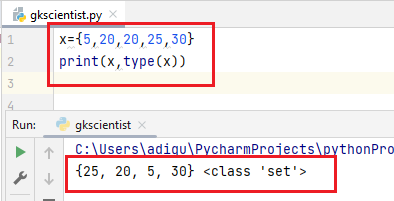
- Sets iteration in Python.

(3) Python Sets Functions.
- set()– The set() function creates a set object.

- remove()– This removes the specified element from the set. If the element is not found it raises a KeyError.
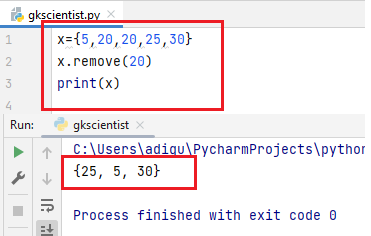
- discard()– This removes the given element from the set if it is present. No Key Error is raised in this case if the element is not found.

- pop()– Removes any random element from the set.
Use the pop function one time.

Use the pop function two times.
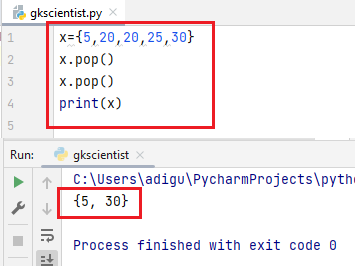
- clear()– This removes all elements from a set.

- add()– This adds the given element to the set.

- update()- Add multiple elements into a set.

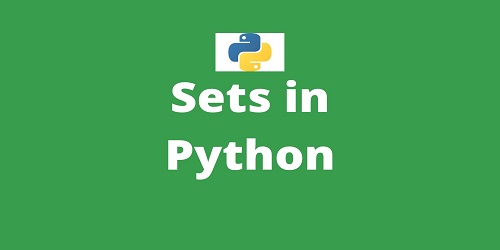




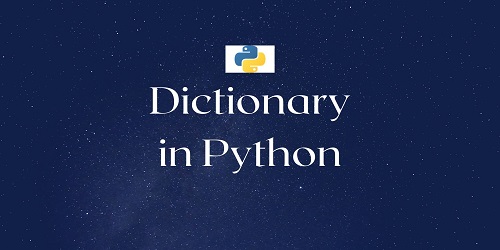



Comments (No)